










Balkan Music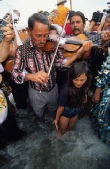 Briefly, the music from southeastern Europe deserves a mention in the realms of music useful to sound healers. A remarkable infusion of various cultures has led to spirited blending of styles and sounds from the upper Middle East, Mediterranean cultures, southwestern Russia, and the Slovakian countries. It is gypsy in style as well as folk in spirit. It is music of the people. The haunting vocal styles of the Bulgarian singers owes to their harmonizing musical seconds, an interval typically frowned upon by the Western ear. The upbeat gypsy feel is infectious and uplifting. As music to stir the heart, liven the feet, and inspire the release of the irrelevant past it is unparalleled. Voice, guitar, fiddle, accordion, horn, and percussion are typical instrumentations.
Briefly, the music from southeastern Europe deserves a mention in the realms of music useful to sound healers. A remarkable infusion of various cultures has led to spirited blending of styles and sounds from the upper Middle East, Mediterranean cultures, southwestern Russia, and the Slovakian countries. It is gypsy in style as well as folk in spirit. It is music of the people. The haunting vocal styles of the Bulgarian singers owes to their harmonizing musical seconds, an interval typically frowned upon by the Western ear. The upbeat gypsy feel is infectious and uplifting. As music to stir the heart, liven the feet, and inspire the release of the irrelevant past it is unparalleled. Voice, guitar, fiddle, accordion, horn, and percussion are typical instrumentations.
Western European
When music reached western European hands thus began an evolution in the intellectualization of sound. Understanding and evolving and improving became an unspoken influence upon the music from the beginning of the Medieval period in 500 AD to the end of the Romantic period in 1910. Though beautiful music has survived from the times, the high brow societal element has distanced the impact upon the common folk. The rise of sound healing under the umbrella of Music Therapy has given compositions from the 1500 year periods new ears and new light.
Early Medieval music surfaced as the monastic motif that gave vocal to hymns and chants of the Catholic Church, Gregorian Chant. The style is immediately recognizable and extremely useful to the sound therapist as the pitch range is exactly that which stimulates the Vegas nerve that runs through the body touching all the major organ systems, resulting in energetic awareness. It is useful in the process of learning as it keeps one alert and focused. Of note also, Gregorian chant was the first music to be notated, giving beginning to the formal process of musical notation that allowed music to be repeated as written by the composer, rather than being memorized by musicians and being passed on by sharing, a process that resulted in many variations of the original composition. Thus the same song could be made available to the masses.
Polyphonic, or multi-
In 1600 the first strains of the Baroque music were heard, characterized by a return to simple melody alongside a basic accompaniment, which soon gave rise to a figured bass technique, the precursor of the extensive use of harmony and chords. At least one instrument capable of playing chords must be included, such as a harpsichord, organ, guitar, lute, and harp. In addition, any number of instruments which play in the bass register may be included, such as cello, double bass, bass viol, or bassoon. As the period evolved, so, too, did the styles of presentation, moving through chamber music to opera to concerto to symphony. At the end, Bach surfaced first as a renowned teacher and later as prolific composer who pioneered technique and assimilations of known styles into a celebration of the period. His fugues and toccatas are unparalleled. Paired with Vivaldi and Handel, these three created timeless concertos, sonatas, and operas that have long stood the test of time. In music therapy, their work is applied often to alter the moods and expressions of the client. The sound healer would be wise to gather samples form all three to be prescribed as a remedy for innumerable ailments.
Page 10
Click to access Sound Healing History, part 4 page 4
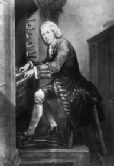
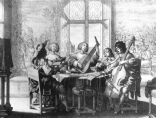
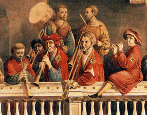
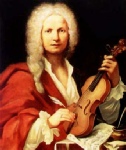
LEARNING BLOCKS Sound and Vibration l Voice l Chakras l Energy l Singing l Sound Healing Tools l Color l Senses
Music Therapy l Resources l Sound Healing Sessions l Applications

Sound Healing History l Contemporary Sound Healers l Physics of Sound l Esoterics of Sound l Cymatics l Sacred Geometry l Vibration l
Frequency and Pitch l Intervals l Scales and Keys l Hearing and Listening



